基于单片机的数字称重仪器的设计(含电路图,程序)
无需注册登录,支付后按照提示操作即可获取该资料.
基于单片机的数字称重仪器的设计(含电路图,程序)(课题申报表,任务书,开题报告,中期检查表,外文翻译,论文15700字,程序,答辩PPT)
摘 要
随着时代 科技的迅猛发展,微电子学和计算机等现代电子技术的成就给传统的电子测量与仪器带来了巨大的冲击和革命性的影响。作为重量测量仪器,数字称重仪器在各行各业开始显现其测量准确,测量速度快,易于实时测量和监控的巨大优点,并开始逐渐取代传统型的机械杠杆测量秤,成为测量领域的主流产品。本文设计的数字称重仪器以STC89C52单片机为核心,采用C语言进行软件设计,硬件则以压力传感器为主。称重传感器输出的电量是模拟量,数值比较小,采用HX711高精度24位,自带放大电路,设计精度达1g。A/D转换的结果送单片机进行数据处理。其数据显示部分采用LCD12864来显示,成本低且能很好地实现所要求的功能。
关键词 单片机;称重;高精度;A/D转换
Abstract
With the rapid development of technology of the times, the achievements of microelectronics and computers and other modern electronic technology play huge and revolutionary impact on the traditional electronic measuring instrument. As a weight measuring instruments, Digital Weighting Instrument has shown its high accuracy and speed. It has advantages in real-time measurement and monitoring, and began to gradually replace traditional mechanical scales. Intelligent electronic scale has become the mainstream products in the field of measurement.
In this paper, the MCS-52 is used as the main the component of the Digital Weighting Instrument, C language is utilized as the software and the pressure sensor is used as the main hardware. Because the output is analog and the value of it is relative small, HX711 with precision is 24 bits is used as the main AD converter and amplifier, the accuracy of the scale is 1g. The results of AD converter are sampled by the microcontroller, and the information is filtered and displayed. The results are shown in LCD12864, the system has low cost and can be realized easily.
Key words: Single chip microcomputer; weighting; high-precision; A/Dconversion
系统的组成
本数字称重仪器系统可分为单片机控制电路、A/D转换电路、传感器、LCD显示、矩阵键盘、蜂鸣器模块等几部分。
系统的工作原理
系统原理如图2-1所示,系统通过传感器将压力这种物理量转化为电信号,即传感器内部的电阻应变片感应到压力后,电阻发生微小变化,通过全桥测量电路将电阻的微小变化转化成电压的微小变化,HX711将信号调整到A/D能采集的范围,然后由A/D进行采集,接着把采集到的24位高低电平通过DOUT送到单片机进行处理,单片机处理后,把数字信号输送到显示电路中,由显示电路输出测量结果。整个系统实现了用单片机来控制输出,在线性度的确定过程中,需要对程序进行反复的修改,最终实现设计的要求。
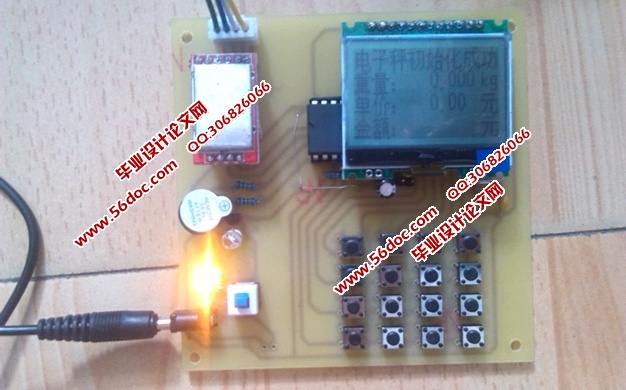
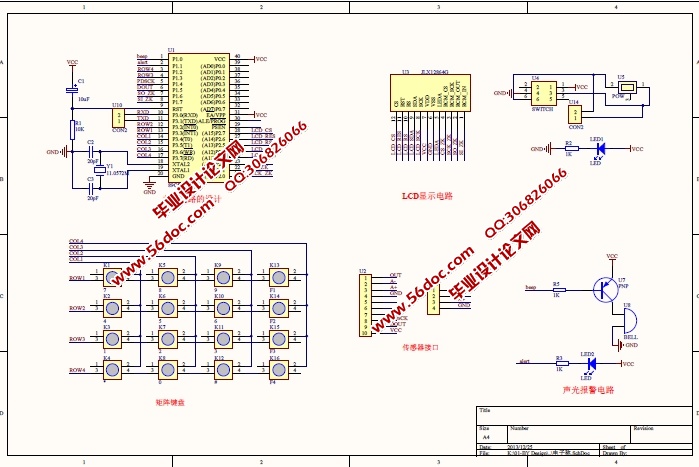
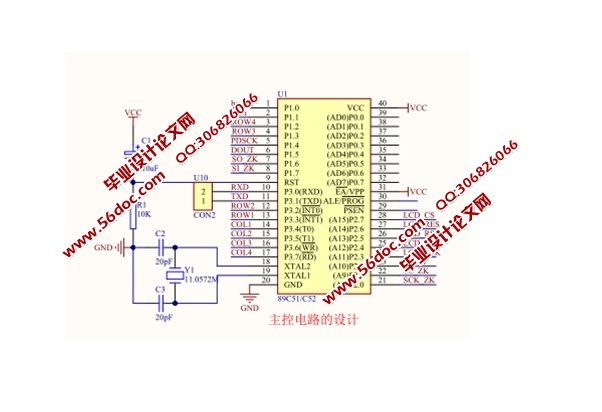
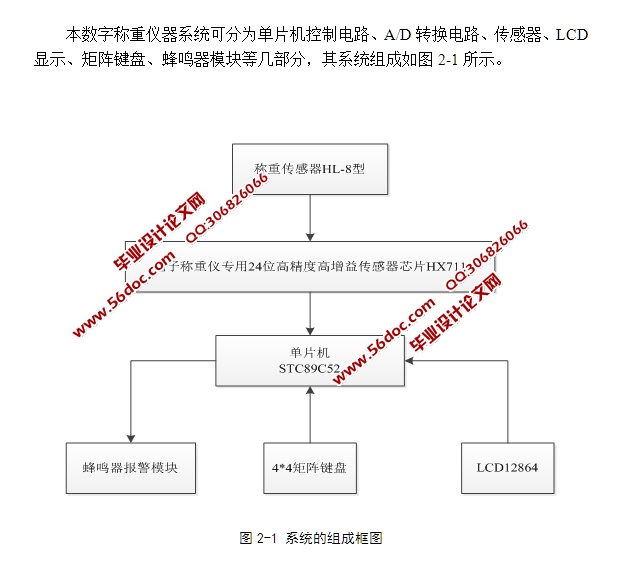
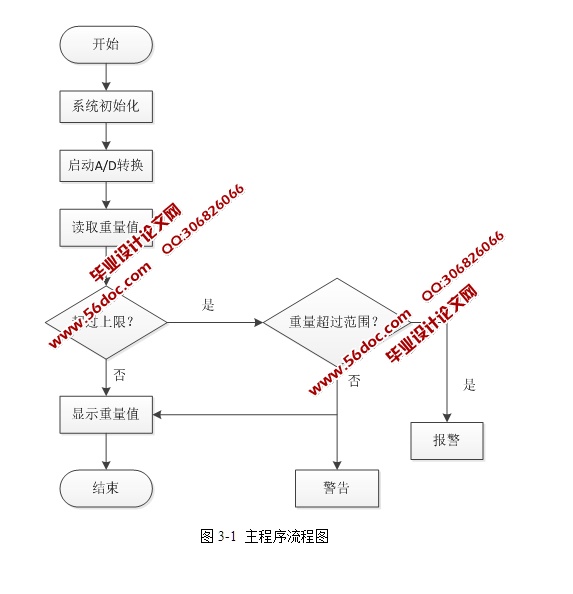
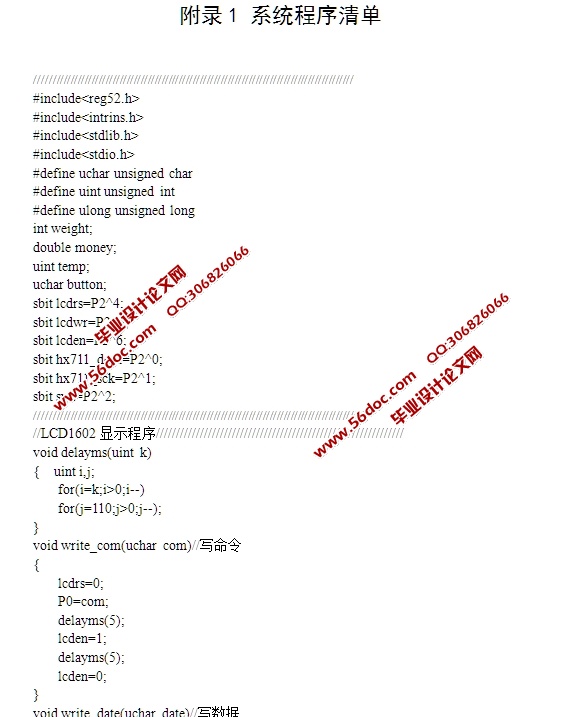

目 录
第1章 概 述 1
1.1 选题背景与意义 1
1.2 电子称重仪的研究现状及发展趋势 1
1.3 本设计的主要内容 2
第2章 系统硬件设计 3
2.1 系统的组成 3
2.2 系统的工作原理 3
2.3 主控芯片STC89C52单片机基本系统 4
2.4 A/D转换芯片HX711接口电路的设计 6
2.5 压电传感器的设计 12
2.6 显示电路设计 14
2.7 键盘输入 19
2.8 本章小结 20
第3章 系统软件设计 21
3.1 C语言在单片机中的应用 21
3.2 系统主程序流程图 22
3.3 子程序设计 23
3.4 本章小结 25
第四章 系统的调试与分析 26
4.1系统的调试 26
4.2本章小结 26
结论 27
参考文献 28
致 谢 29
附录1 系统程序清单 30
附录2 实物图 39
